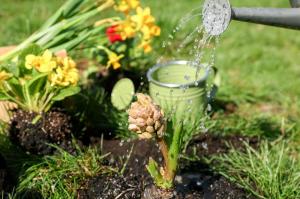How to Take Care of a Rose Pot Plant
Rose pot plants are popular among gardening enthusiasts due to their beauty, variety, and fragrance. However, taking care of a rose pot plant requires patience, dedication, and knowledge. In this article, we will discuss the essential steps and tips to ensure your rose pot plant thrives and blooms in its full glory.
Choose the Right Pot
The first step to taking care of a rose pot plant is to choose the right pot. Ensure the pot has good drainage holes to avoid waterlogging, which can lead to pest and disease problems. The pot should be large enough to accommodate the root system of the rose plant, but not too big as to overwhelm it. Terracotta pots are a great option as they are porous, allowing air to circulate, and moisture to evaporate.
Provide Adequate Sunlight
Rose pot plants require at least six hours of direct sunlight, preferably in the morning. Ensure the plant is placed in an area with good airflow, away from drafts or heat sources that can cause stress to the plant. In case the rose plant doesn't receive enough sunlight, you can supplement it with artificial light sources, such as LED grow lights.
Watering and Fertilization
Proper watering is crucial in taking care of a rose pot plant. Water the plant deeply once a week or when the top inch of soil feels dry, and avoid splashing water on the foliage, which can cause fungal diseases. Fertilize the plant every four to six weeks, using a balanced all-purpose fertilizer, or a specialized rose fertilizer, following the instructions on the label. Overfertilization can lead to root burn, so be careful not to exceed the recommended dosage.
Pruning and Deadheading
Pruning and deadheading are important steps in taking care of a rose pot plant. Prune the plant in early spring to remove any dead, diseased, or damaged wood, and to promote strong growth. Deadheading, or removing faded blooms, encourages the plant to produce more blooms and prevents it from wasting energy on seed production. Use sharp and clean pruners to avoid damaging the plant, and disinfect the tools with rubbing alcohol after each use.
Pest and Disease Control
Preventing and controlling pests and diseases is crucial in taking care of a rose pot plant. Monitor the plant regularly for any signs of pests, such as aphids, spider mites, or thrips, and treat them promptly with insecticidal soap or neem oil. Avoid using broad-spectrum pesticides that can harm beneficial insects and pollinators. In case of disease, such as black spot or powdery mildew, remove and dispose of infected leaves immediately, and treat the plant with a fungicide following the instructions on the label.
Conclusion
In conclusion, taking care of a rose pot plant requires attention to detail and regular maintenance. Choose the right pot, provide adequate sunlight, water and fertilize regularly, prune and deadhead, and prevent and control pests and diseases. With proper care, your rose pot plant will reward you with abundant blooms and fragrance, making it a beautiful addition to your garden or indoor space.

 how many times do yo...
how many times do yo... how many planted tre...
how many planted tre... how many pine trees ...
how many pine trees ... how many pecan trees...
how many pecan trees... how many plants comp...
how many plants comp... how many plants can ...
how many plants can ... how many plants and ...
how many plants and ... how many pepper plan...
how many pepper plan...
































